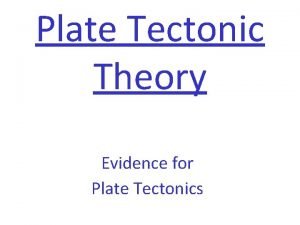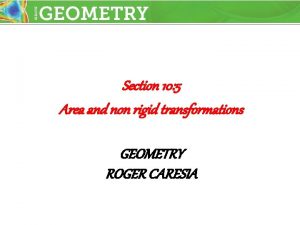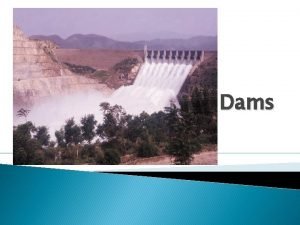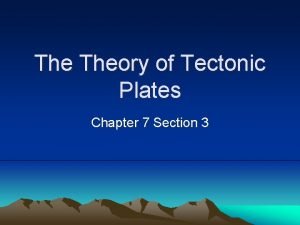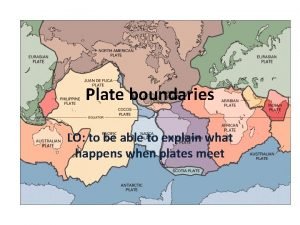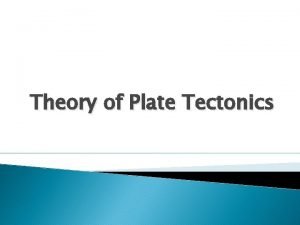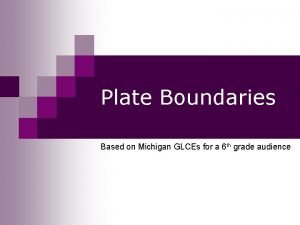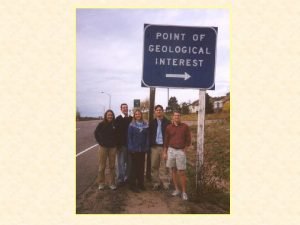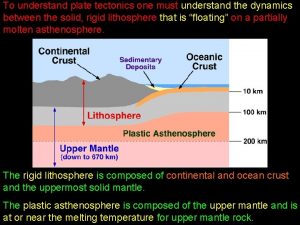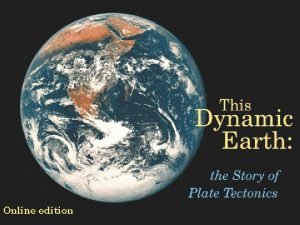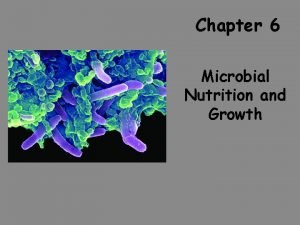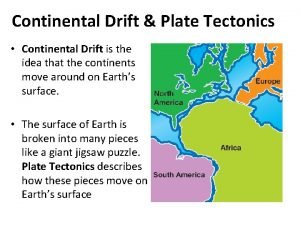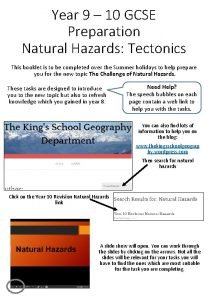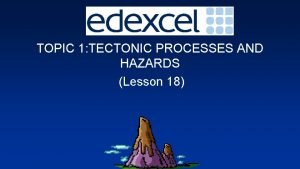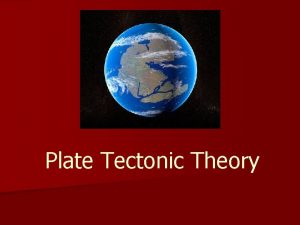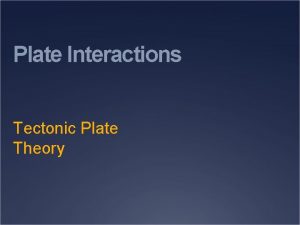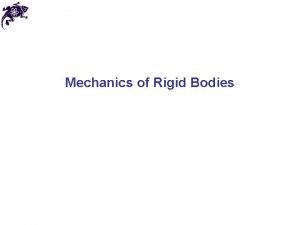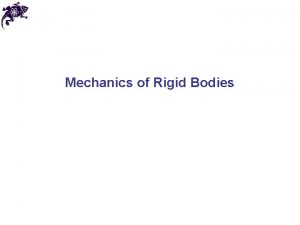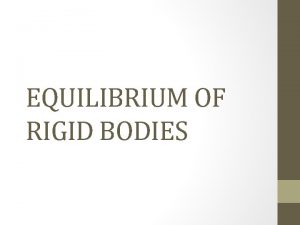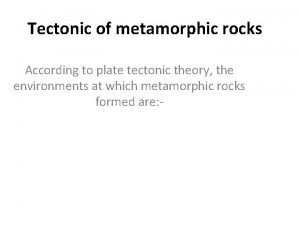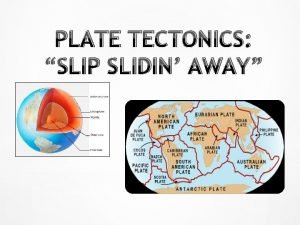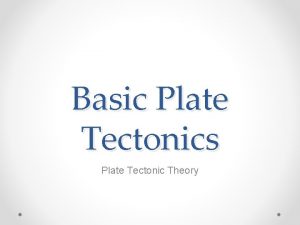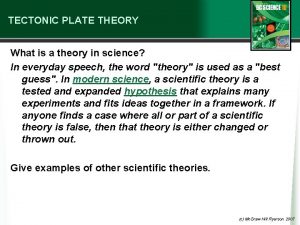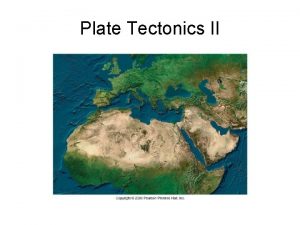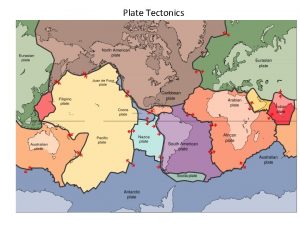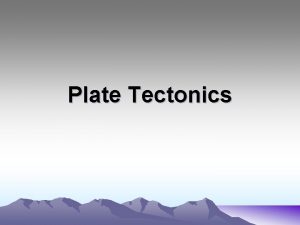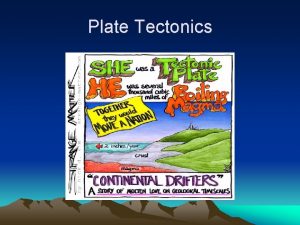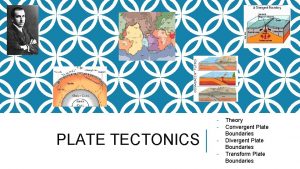PLATE TECTONIC THEORY WHAT IS PLATE The rigid
























- Slides: 24

PLATE TECTONIC THEORY WHAT IS PLATE? ØThe rigid lithospheric slab or rigid and solid crustal are technically called ‘plates’. (Also called lithospheric plate) The whole mechanism of the evolution, nature and motion of plates and resultant reaction is called ‘plate tectonic’. ØIn other worlds, the whole process of plate motion is referred to as plate tectonics. ØA tectonic plate is a massive, irregularly-shaped slab of soil rock, generally composed of both continental and oceanic plate. ØPlate move horizontally over the asthenosphere as rigid unit. ØPlate tectonic theory, a great scientific achievement of the decade of 1960 s, is based on two major scientific concepts. 1) The concept of continental drift and 2) The concept of sea floor spreading.

‘Plate’ word Ø The term ‘plate’ was first used by Canadian geophysicist J. T. Wilson in 1965 AD. Ø Mc. Kenzie and Parker discussed in detail the mechanism of plate tectonic. Ø The theory of plate tectonics propose that the earth lithosphere is divided into seven major and twenty minor plates. Ø Major plates are as follows: 1) Antarctica and the surrounding oceanic plate. 2) North America (with western Atlantic floor separated from the south America plate along the Caribbean islands. 3) South America plate (with western Atlantic floor separated from the north America plate along with the Caribbean islands). 4) Pacific plate. 5) India- Australia-New Zealand plate. 6) Africa with the eastern Atlantic plate 7) Eurasia and adjacent oceanic plate



Ø It may be highlighted that tectonically plate boundaries or plate margins are most important because all tectonic activities occur along the plate margins like seismic events, vulcancity, mountain building, faulting etc. Ø Plate margins are generally divided into three groups. These are…… 1). Constructive plate margins or divergent plate margins. 2) Destructive plate margins or convergent plate margins. 3) Conservative plate margins

Diagrammatic Presentation

Types of plate boundary


Constructive plate margins: - Are also called as ‘divergent plate margins’ or ‘accreting plate margins’. Ø Constructive plate margins represent zones of divergence where there is continuous upwelling of molten material and thus new oceanic crust is continuously formed. In fact, oceanic plates spilt apart along the midoceanic ridges and move in opposite directions.



Destructive plate margins Ø Destructive plate margins are also called as ‘consuming plate margins’ or ‘convergent plate margins’. Because two plates move towards each other or two plates converge along a line and leading edge of one plate overrides the other plate and the overridden plate is subducted or thrust into the mantle and thus part of crust lost in the mantle.

Convergent Boundary


Conservative plate margins Ø Conservative plate margins are also called as ‘shear plate margins’. Here two plates pass or slide one another along transform faults and thus crust is neither created nor destroyed.

Transform boundary

Plate tectonic theory based on the evidences of: (1). Sea floor spreading (2). Palaeomagnetism Sea-floor spreading: Ø concept of sea floor spreading was first propounded by professor Hary Hess of the Peincepton University in the year 1960 AD. Ø His concept was based on the research findings of numerous marine geologists, geochemists and geophysicists. Ø Mason of the Scripps institute of oceanography obtained significant information about the magnetism of the rocks of the sea floor of pacific ocean with the help of magnetometer.

Ø Based on these information Hary Hess propounded that the mid-oceanic ridge were situated on the rising thermal convection currents coming up from the mantle. Ø The oceanic crust moves in opposite directions from mid –oceanic ridges. These molten lava cool down and solidify to form new crust along the trailing ends of divergent plates(Oceanic crust). Ø Thus, there is continuous creation of new crust along the mid-oceanic ridges. This, according to Hess, proved the fact that sea-floor spreads along the mid oceanic ridges and expanding crusts are destroyed along the oceanic trenches. Ø These facts prove that the continents and ocean basin are in constant motion.

Convection current • When you boil a pot of water, the liquid moves around so rapidly? This is due to convection currents. • Convection is one of the three main types of heat transfer, the other two being conduction and radiation. Unlike the other two, convection can only happen in fluids.




Palaeomagnetism Ø W. G. Vine and Mattheus conducted the magnetic survey of the central part of Carlsberg ridge in Indian ocean in 1963 and computed the magnetic profile on the basis of general magnetism. Ø When he compared the computed magnetic profile with the profile of magnetic anomalies plotted on the basis of actual data obtained during the survey, he found sizeable difference between the two profiles.

 Compare continental drift and plate tectonics
Compare continental drift and plate tectonics Evidence for pangea
Evidence for pangea Continental drift theory and plate tectonics theory
Continental drift theory and plate tectonics theory Non-rigid transformations
Non-rigid transformations Overflow dams
Overflow dams Graphing irrational functions
Graphing irrational functions 7 tectonic plates
7 tectonic plates Blank plate tectonics map worksheet
Blank plate tectonics map worksheet Tectonic plates interact at places called plate
Tectonic plates interact at places called plate Glces
Glces Romanche trench
Romanche trench Building pangea gizmo map
Building pangea gizmo map S waves
S waves What tectonic plate is south africa part of
What tectonic plate is south africa part of Tectonic plate boundaries map
Tectonic plate boundaries map Plate theory chromatography
Plate theory chromatography Pour plate method vs spread plate method
Pour plate method vs spread plate method Pure method
Pure method Streak plate method
Streak plate method A denser oceanic plate collides with a continental plate
A denser oceanic plate collides with a continental plate Oreo tectonics
Oreo tectonics Primary and secondary effects of a tectonic hazard
Primary and secondary effects of a tectonic hazard A map of the ring of fire
A map of the ring of fire Primary and secondary effects of a tectonic hazard
Primary and secondary effects of a tectonic hazard Assess the importance of tectonic hazard profiles
Assess the importance of tectonic hazard profiles

